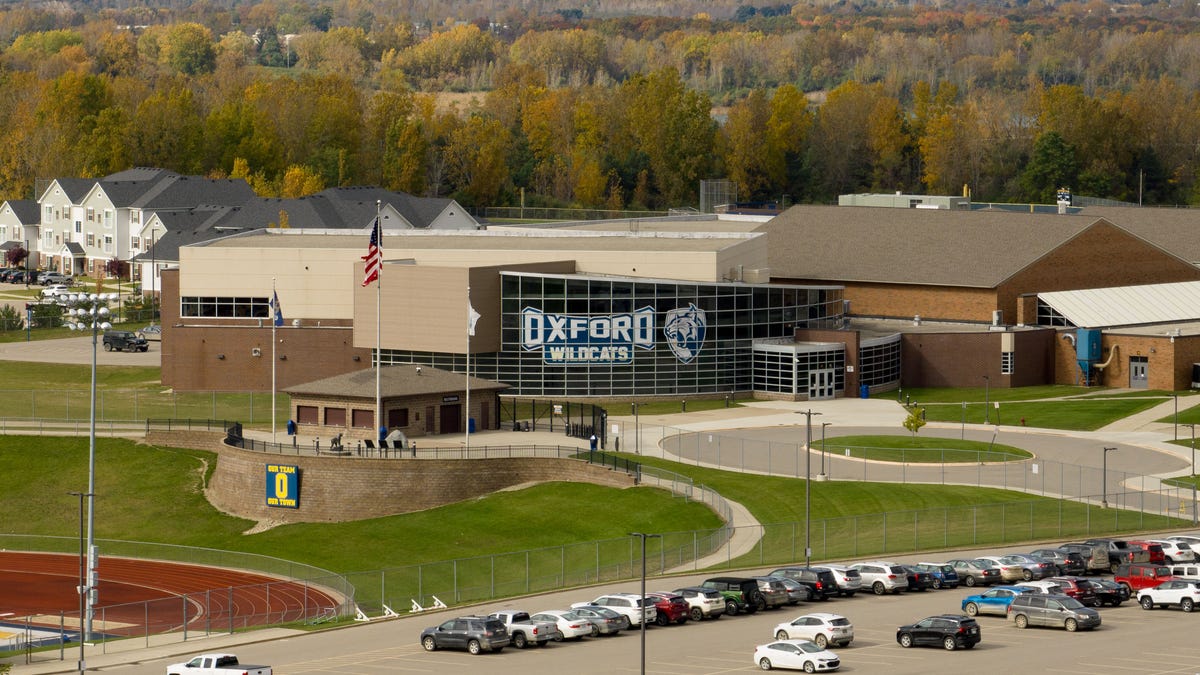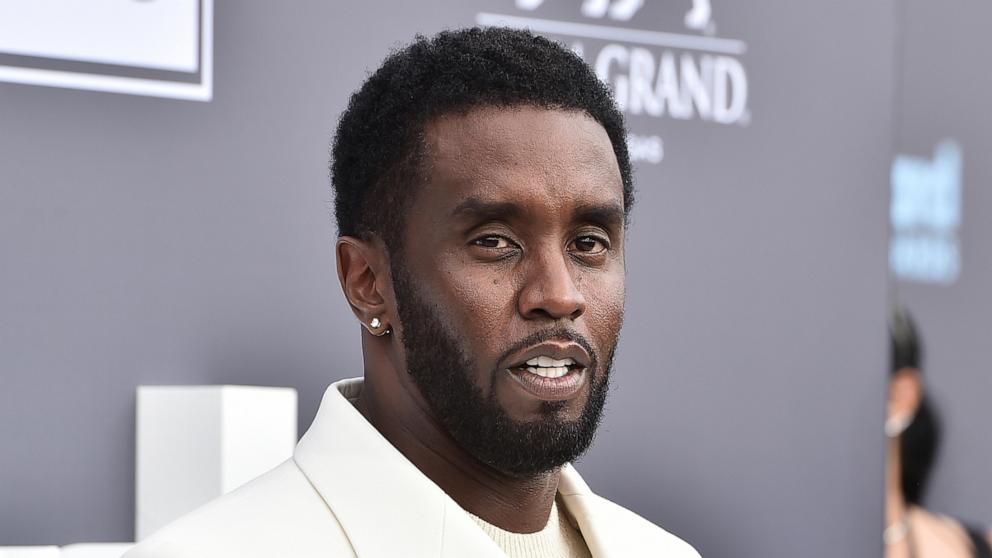Missteps and failures by Oxford Community School’s former superintendent and two former members of his cabinet snowballed to allow the Oxford High School shooter to slip through the school’s threat assessment and suicide intervention systems and carry out Michigan’s worst school shooting, according to a 572-page report issued late Monday night.
Investigators with Guidepost Solutions, the organization that conducted the first independent investigation into the Nov. 30, 2021, attack at Oxford High School, laid blame for the shooting on Tim Throne, who was superintendent at the time of the attack and in the days leading up to it.
The report also put a major responsibility for the shooting on Jill Lemond and Denise Sweat, both former assistant superintendents for student services, titles that Guidepost said made them responsible for creating and carrying out an appropriate threat assessment and suicide intervention process.
“We believe that the district’s senior administration bears the most significant responsibility for the District’s failure to implement an appropriate threat assessment and suicide intervention process,” the report says.
Before the attack, which killed four students and injured seven others, an Oxford High teacher saw the shooter looking at handgun ammunition on his cell phone and reported him to other school officials. He was told it was an improper classroom activity.
While in English class, the shooter was caught watching a shooting video on his cellphone, which the teacher reported to higher school officials. In math class, the teacher found his worksheet with drawings of a gun and the words “Blood everywhere.” Below the gun drawing were the words: “The thoughts won’t stop” and “Help me.”
“As a result, these individuals did not escalate the shooter’s conduct to the OHS principal, as required by district policy, and therefore, the school did not perform a threat assessment of the shooter,” the Guidepost Solutions report says. “If an effective threat assessment had been done on November 30 — a threat assessment that complied with District policy and proper guidelines and was guided by an important District form — the Shooter would have been identified as posing a potential threat of violence.”
More: Read the Guidepost report on the Oxford High School shooting
Investigators said Sweat, who left the district in January 2021, refused to speak with them, while Lemond, who was in her post the day of the attack, did speak but denied responsibility for overseeing the threat assessment policy.
“In fact, Lemond claimed that she was not responsible for threat assessment even though she prepared a grant application on threat assessments in the spring of 2021,” the report said.
“None of the assistant superintendents in the central office as of November 23-30, 2021, who we interviewed accepted responsibility for threat assessment. That no cabinet-level administrator accepted responsibility for ensuring that the district’s threat assessment policy was being implemented correctly is a serious breakdown.”
Throne, Sweat and Lemond could not be reached Monday night for comment.
Of the 161 people Guidepost investigators tried to interview for the report, 70 did not respond or refused to participate.
More: These Oxford officials received the most criticism in shooting report
The report suggested that this is in part because the district’s attorneys, Giarmarco, Mullins and Horton, advised employees not to speak with Guidepost because it could lead to difficulties with litigation, and, in particular, advised critical witnesses not to cooperate. Union attorneys also advised members not to participate.
Also complicating things was the school board’s decision to make participation in interviews voluntary, according to the report.
“The combination of the Board’s decision to make participation in the investigation voluntary, as well as the advice from GMH and the teacher’s unions against participation, hindered our ability to conduct the investigation efficiently. Individuals with critical background information were not willing to provide it,” according to the report. “We were instead forced to seek that information from other sources, adding time and complication to the process.”
More: How Oxford finally got an independent report into 2021 school shooting
Four students — Hana St. Juliana, 14; Madisyn Baldwin, 17; Tate Myre, 16; and Justin Shilling, 17 — were killed and seven others, including a teacher, were injured in the mass shooting.
The gunman, Ethan Crumbley, was a 15-year-old sophomore at the time of the attack who plotted the killing spree in a journal and used a Sig Sauer 9 mm semi-automatic handgun to kill classmates and shot at others.
The report also blamed the district’s school board by saying: “The absence of threat assessment guidelines is a significant failure, the responsibility for which sits with the superintendent, the assistant superintendents, and the Board.”
“The Board is responsible for ensuring that the Superintendent implements the Board’s policies — in this case, by creating administrative guidelines for the threat assessment policy. The Board did not do so,” the report says.
More: Oxford report provides more detailed chronology of deadly school shooting
Oxford’s threat assessment policies
The report alleges that Throne and his administrative cabinet failed in five key areas:
- They failed to properly communicate the district’s threat assessment policy to building-level administrators to ensure that the policy was being followed.
- They didn’t adopt threat assessment administrative guidelines, which would have required team members to receive sufficient training, defined the low threshold that would trigger a threat assessment, and created a written process for conducting and documenting threat assessments.
- They failed to notify building-level administrators of the existence of a threat assessment form, which was available on the district’s website, and direct those administrators to use that form at their schools.
- They didn’t ensure that there were trained threat assessment teams in place at each school led by a principal, and including school mental health professionals and school resource officer.
- They failed to ensure that the district’s suicide intervention guidelines were updated, directing that it is “imperative” for school mental health professionals to ask parents whether the student has access to firearms, the report says.
The report’s authors “correctly blame the Shooter, who pled guilty to murder and attempted murder, and his parents for supplying him with the instrument of death.”
But “our investigation has revealed that had proper threat assessment guidelines been in place and District threat assessment policy followed, this tragedy was avoidable,” the report continued.
The report said failures by the district included insufficient training of threat assessment team members at Oxford High School, especially of school mental health professionals, many of whom were unaware of a threat assessment process at the high school.
The high school sent a handful of staff members to a one-day threat assessment training in 2018, but there was no external training in 2019, 2020 or 2021.
While OHS instructed staff annually on classroom management behaviors, which included a directive that a threat should be reported to the dean of students, it did not instruct staff that any concerning behavior or communications that might suggest violence or a threatening situation should be reported to the principal or an assistant principal.
Former board President Tom Donnelly alleged that Oxford Community Schools did not follow its own threat assessment policies to prevent school violence before the Nov. 30 mass shooting at its high school.
Throne left the district in March 2022. Lemond resigned from Oxford in September 2022 and now works as a director of education market development at Evolv, the company that provides the weapons detection systems installed at the high school after the shooting.
Report focuses on shooter’s actions
The report zeroed in specifically on the shooter’s actions on Nov. 29 and 30, 2021, and found that a proper threat assessment was not conducted when the shooter’s “conduct, statements and drawings suggested that he might cause physical harm at the school.”
The principal should have been alerted by the shooter’s counselor, Shawn Hopkins, and Nick Ejak, dean of students, but “tragically” was not, the report said. Instead, after a meeting with Hopkins, Ejak and his parents, the shooter was allowed to return to his classroom.
Ejak and Hopkins had “enough concerning information” at that time to notify the principal, who could have conducted a proper threat assessment and searched the shooter’s backpack, the report found.
“The shooter’s parents should have been required to take him out of school and to a mental health professional, as recommended,” the report said. Instead, Ejak and Hopkins “allowed the shooter to return to class with his backpack, which contained the gun and ammunition he used later that day to gun down students in the hallways of OHS.”
Investigators believed Hopkins had previously met with the shooter May 13, 2021, and Nov. 11, 2021, and was “the OHS staff person who possessed the most information about the shooter.”
Neither Hopkins nor Ejak agreed to speak to investigators, according to the report.
“The two people with the most information about the decision to allow the shooter to go back to class with his backpack refused to cooperate with our investigation,” the report said.
Questions over emergency response, security systems
Multiple families of victims of the attack have filed civil lawsuits against the school district, its leaders and school administrators who were with the gunman in the days and hours leading up to the attack.
Their lawsuits allege the district failed to protect students and downplayed the threat the gunman posed to the school. Oxford students and their families contend in their lawsuits that the district took actions that created or increased the danger that the teen shooter presented to students and teachers.
Although the EMS response to the attack was not a focus of the Guidepost investigation, it was noted in the report that video footage from Oxford High School showed that EMS entered the south 200 hallway at approximately 1:13:33 p.m., 21 minutes and 47 seconds after the first 911 call was placed.
Assistant Principal Kurt Nuss told investigators that on Nov. 30, he was radioing for help, pleading for medical assistance at Door 5, where Tate Myre lay injured. At 12:57:56 p.m., Nuss unlocked Door 5 and recalled that he saw police cars driving by and going to the front of the school.
Recordings of administrative assistant Melissa Williams’ 911 calls showed that Nuss and Principal Steve Wolf repeatedly asked Williams to tell medical first responders that they had a victim with a serious injury by Door 5 who needed medical assistance. Those recordings also confirm that Williams relayed this information to 911, and 911 operators assured Williams that they were relaying the requests to the first responders on the scene.
Nuss recalled that at some point after law enforcement entered the school, Oakland County Sheriff’s Deputy Shane Freiberg began to help Assistant Principal Kristy Gibson-Marshall with Tate. He remembered Freiberg screaming, “Where is EMS!” Frieberg and several other deputies carried Tate to a police car to take him for medical treatment because no medical assistance had arrived to treat Tate inside the school, according to the report.
“Again, we note that our focus is on the actions of the District, the school, and the SRO (school resource officer), and not on the response by other law enforcement or EMS. We cannot explain why medical first responders never answered Nuss’s pleas for help,” the report says.
The report also documented issues with the quality of the public address system during the shooting, as well as a lack of monitoring of the video surveillance system footage, making it impossible to “broadcast ongoing messaging regarding the shooter’s location and movements.”
At the time of the shooting, the school’s two primary security staff were offsite, which “clearly impacted the speed and effectiveness of response measures.” But the school’s protocol didn’t require armed staff to be present at all times.
Hopkins and Ejak did not contact security staff after their meetings with the shooter on Nov. 30, 2021.
One of the security officers wasn’t at the school that day, and the other, Deputy Jason Louwaert, had left a little more than an hour before the shooting to address a vehicle that had been abandoned at Oxford Middle School, then stopped at the Oxford Substation.
Louwaert was returning to the school when he heard of the shooting on the school radio. He arrived at about 12:57 p.m.; at the same time, a separate sheriff’s deputy arrived.
Louwaert walked the halls with the deputy until they came to the bathroom, at which point the shooter exited with his hands up.
The report emphasized the importance of monitoring video surveillance. If individuals had been, they would have been able to direct Louwaert to the bathroom more quickly.
Delay angers families
Oxford parent Danielle Krozek described the contents of the report as validation of what she and others have been fighting for since Nov. 30, 2021.
“This has been a very long road but FINALLY some validation of what we have been saying (FACT BASED) and sharing for two years!” Krozek posted on Facebook. “The issue remains on how the district and board will respond to it!”
Guidepost officials had promised the Oxford community the report would be released on Monday after school was done for the day, which would have been around 3 p.m. But late into the evening, as the release of the report was delayed, some Oxford parents say they grew frustrated and angry all over again.
Andrea Jones, an Oxford parent who has pushed for transparency and accountability by the district for its role in the attack, said she thinks it was an intentional delay.
“I cannot even begin to describe the negative impact of the delay of this report is having. It’s breaking my heart and really firing me up all at once,” Jones wrote on Facebook. “…How dare you do this to these families!! Hell hath no fury like a bunch of pissed off moms.”
Olivia Upham, a 2017 Oxford High School graduate whose brother Keegan survived the attack, posted on Facebook that technical issues in releasing the 650-page document hurt Guidepost’s credibility.
“It is mind blowing, they have the oxford community in the palm of their hands and they’ve desecrated any morsel of credibility they potentially earned,” Upham said in her post. “‘Tech issues’ is not an appropriate justification, for a community that has been begging for 2 years for accountability, this amount of ambiguity is gut wrenching.”
What Oxford families expect
Families of the slain students said they would need time to digest the report before commenting on its findings. In the days ahead of its release, some of those parents expressed doubt and concern about the truthfulness of the report.
Buck Myre, whose son Tate was fatally gunned down inside the high school, has said he questions everything that will be in the report ahead of its release. Yet Myre, who has been among the most outspoken of the four Oxford families with murdered children, says he does remain hopeful the report will shine new light on previously unknown issues.
He remains frustrated at blocked legal action his family and many others have taken against Oxford Community Schools after an Oakland County judge’s dismissed all lawsuits against the district and its employees on the grounds of governmental immunity.
A decision by the state’s teachers union to advise its employees not to speak to Guidepost investigators about the attack sent a clear message, Myre said.
“These kids’ lives don’t matter,” Myre said.
He declined to comment Monday night, saying he had not yet read the report.
Steve St. Juliana, whose daughter, Hana, was gunned down inside the school and died in the building, also has said he was not overly optimistic about the report before its release. Late Monday, St. Juliana said he was not through reading the report yet.
“Given the fact they haven’t given us any clue as to how it’s going, I wonder how much of the truth they are going to bring out. I am hoping I will be pleasantly surprised,” St. Juliana said.
Community meetings and resources
Officials with Guidepost Solutions said its investigative team would be in Oxford at a to-be-determined non-school location on Thursday, Nov. 2., to answer questions from the community about the report’s findings at 1 p.m., 3:30 p.m. and 6:30 p.m.
Community members are encouraged but not required to submit questions in writing before the meetings to [email protected]. Officials said they would not take questions from the media at the community meetings.
The services below are available for anyone in the community who may need them:
- All For Oxford Resiliency Center
- Common Ground: Call 1-800-231-1127 for free and confidential counseling, information and referrals
- Go to the Common Ground Crisis Center located at 1200 N. Telegraph Road, building 32E, in Pontiac. The crisis center is open 24/7.
- Call the suicide and crisis lifeline at 988

Amanda Smith is a dedicated U.S. correspondent with a passion for uncovering the stories that shape the nation. With a background in political science, she provides in-depth analysis and insightful commentary on domestic affairs, ensuring readers are well-informed about the latest developments across the United States.







